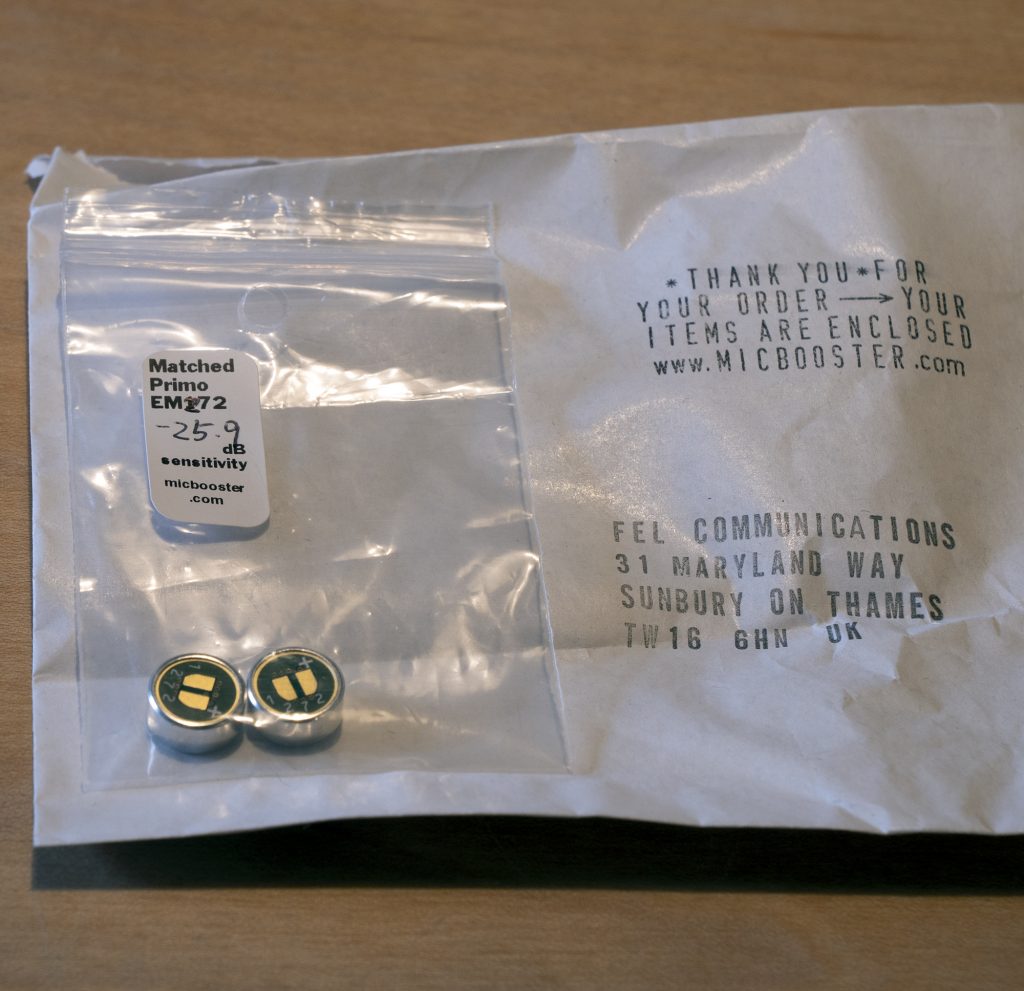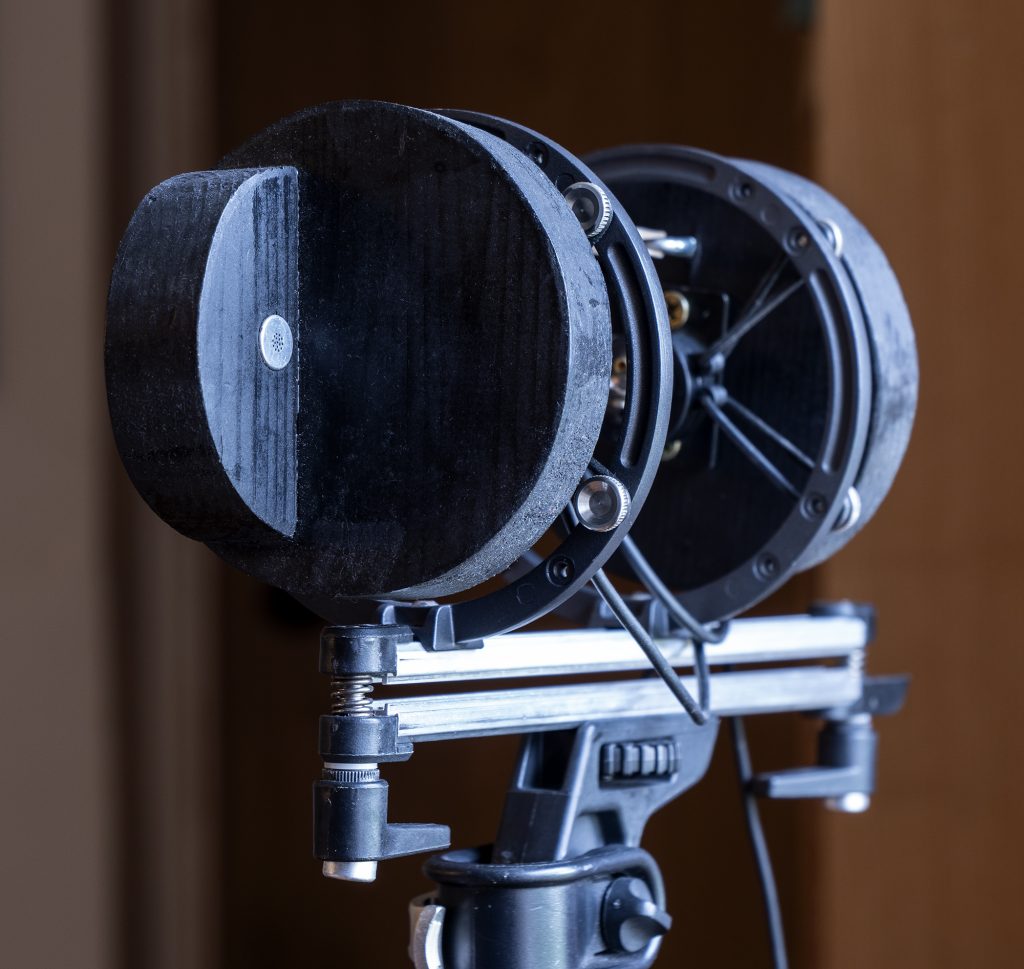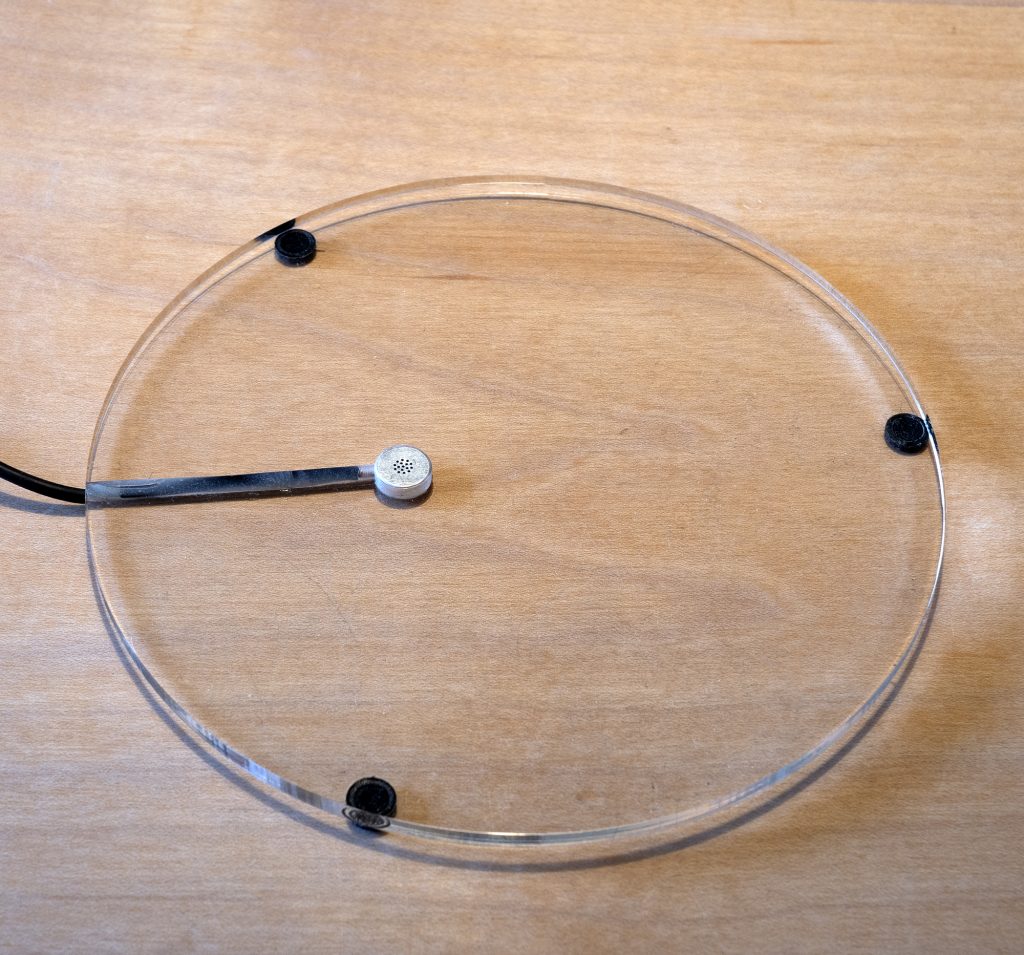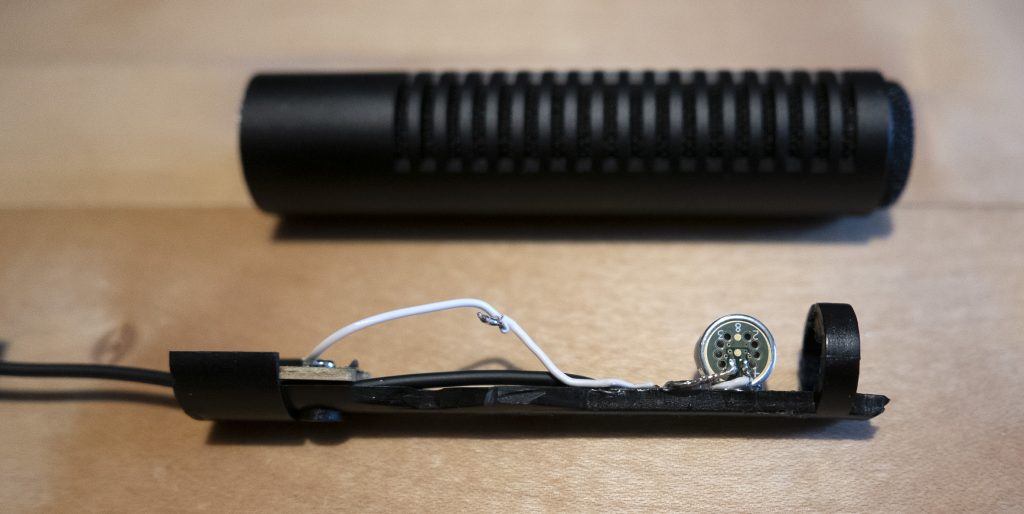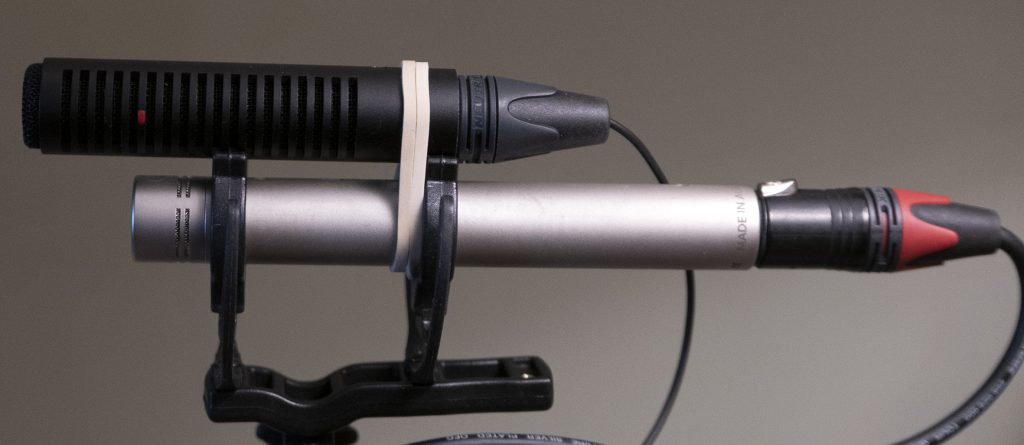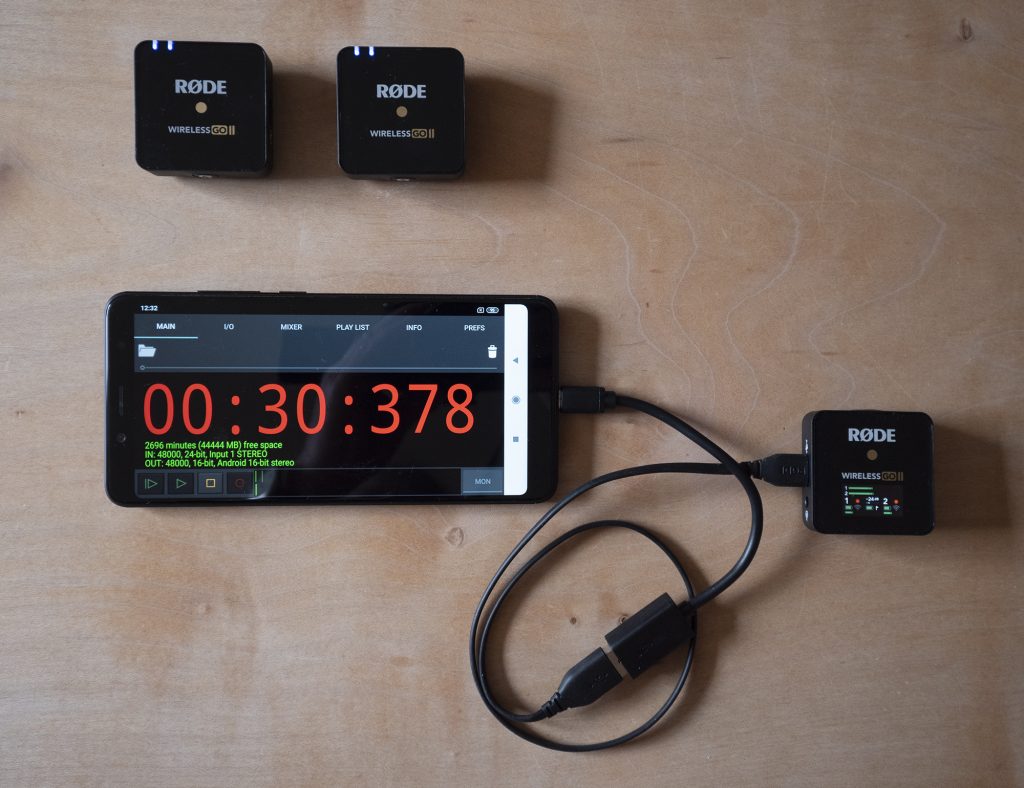
Putting your equipment through its paces is part of getting to understand it properly. Given its newness (only released this week), my tests on the Rode Wireless GO II might be of wider interest: so here’s a post about them.
First, a quick bit of background. I’m not normally in a rush to adopt new technology, but this week – following the death of an old handheld recorder (my Sony M10) and while planning a couple of projects – I was looking at lav mic self-recording back-up options, and Rode’s new offering seemed on the nail and very timely. I know the first version was nothing like a professional wireless mic set up (not least for its dropouts when out of line-of-sight), but I’d found it eminently usable for the particular and less exacting uses I bought it for: in particular, the sound quality stood up compared to the same lav mic hard-wired. So, rather than wait for anyone to get round to a thorough test – as opposed to the numerous unboxing and product review vlogs that will doubtless flood YouTube – I ordered one from CVP.
Overall audio quality
There are different aspects to the audio quality of such a system, including its on-board mics vs external lavs, its on-board recorder vs transmitted audio, and both the recorder and the transmitted audio vs a better system.
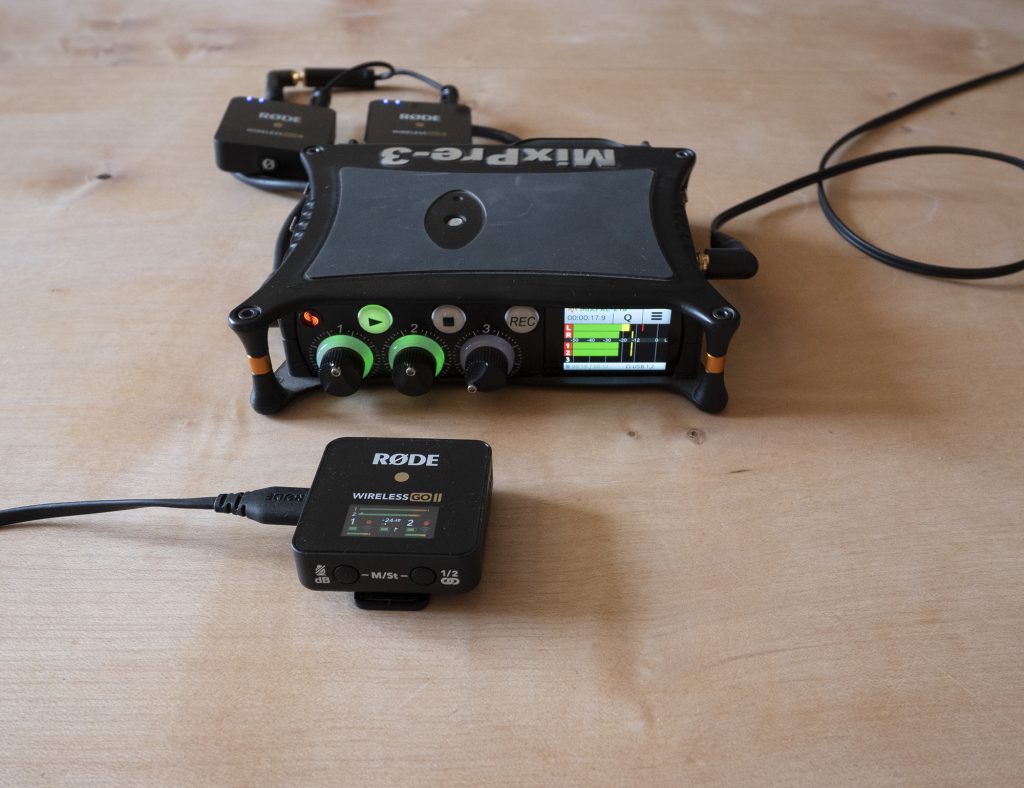
Most interesting to me was to take the on-board and external lav mics (both of which have relatively high self-noise due to their small diaphragms) out of the equation, and test the recorder and wifi alone. For this, I fed the two transmitters with a stereo signal of a simple acoustic guitar recording (recorded with a spaced pair of 7dBA Rode NT2a mics in fig 8 mode) via my Sound Devices MixPre-3 (feeding a signal from the stereo out at -6dB to give a reasonable level at the transmitters, comparable to that of the mics above). I recorded the transmitted signal via the USB out of the receiver. Here are the clips, with no processing added:
Original MixPre-3 recording:
Rode Wireless GO II on-board recorders in uncompressed/broadcast mode:
Rode Wireless GO II on-board recorders using the compressed/standard mode:
Rode Wireless GO II transmitted recording:
The verdict? Well, see what your ears say. The most obvious positive is that the Rode Wireless GO II on-board and transmitted audio show remarkably low self-noise: there is effectively no hiss in the short lead-in. The most obvious negative is the lack of bass response: OK the datasheet shows a frequency response graph with a sharp fall-off below 100Hz, but this appears to relate to the mic. Needless to say, you can boost the bass response in post, and here is a quick EQ’d version (I looked at the bass fall-off in the Rode Wireless GO II using pink noise, though my resultant EQ might be a bit too heavy – but it makes the point):
And, of course, what is effectively a high-pass filter isn’t a significant problem with intended use (speech) and will aid reduction of wind noise and other unwanted low frequencies.
So my overall view on the audio quality of the electronics? Well, the transmitted and on-board recordings sound surprisingly good: OK not up to the level of a Sound Devices MixPre-3 and not ideal for music recording, but easily good enough for use with the on-board lav mics or external lav mics (or other PIP mics such as Micbooster’s Clippy mics) for speech or ambience/nature recording, and perhaps usable – in the way that you might use a small handheld recorder – for music recording where, for whatever reason, a better and more conventional set-up wouldn’t work. Also, the compressed on-board recordings don’t sound too bad at all, despite my natural dislike of lossy compressed formats!
On-board mics
Given the mic in the original Rode Wireless GO, I was reasonably optimistic about it and, also, conscious that a) different people like different lav mics and b) I don’t own any of the more expensive lav mics (such as those made by DPA). But, for what it is worth, here’s a simple comparison of Rode’s lav mic (that’s their more expensive one – at c.£160 – and perfectly usable) vs the on-board mic recording a voice (apologies for the performance!), and recorded via the Rode Wireless GO II’s receiver (both digital out, into an Android phone running USB Audio Recorder Pro, and via the 3.5mm output into a Sound Devices MixPre-3).
Rode Wireless GO II on-board mic via digital out on the receiver:
Rode Wireless GO II on-board mic via 3.5mm analogue out:
Rode lavalier mic plugged into Rode Wireless GO II via digital out on receiver:
Rode lavalier mic plugged into Rode Wireless GO II via 3.5mm analogue out:
The verdict? The on-board lav mic is quite usable if – and this is the key – you don’t mind the transmitter being visible too. The much more secure furry windshields of the new model at least make this more feasible. And as for the difference between digital and 3.5mm output, there is little in it. Well at least with a decent sound recorder: of course, the difference will be greater if choosing between USB into a phone and analogue into a camera with poor audio.
Range and dropouts
As I said, I found the original Rode Wireless GO usable for my purposes, but I can’t deny that a more robust wifi signal wouldn’t be useful. Indeed, for many, it would be essential. The 200m line-of-sight spec for the new version (vs 70m for the original version) shows an improved wifi capability, and this is borne out even in initial, simple, testing. For example, whereas the original Rode Wireless GO – under my test conditions (a rural Norfolk village) – experiences dropouts from around 20m when worn on the rear of the subject (or ‘talent’) – i.e. blocked by the wearer’s body – the new version worn in the same way is good for about 35-40m. Obviously, different locations will produce different results, but this suggests much more suitability for, say, wedding videographers, where, of course, the recorder provides a back-up anyway. For professional sound recordists’ use (e.g. television and film) the improved signal strength is probably immaterial as the units lack the range, features, robustness and ease of control of professional wireless systems such as those produced by Audio Ltd. and Lectrosonics.
Field-recording (an update of 15.3.2020)

Having had the Wireless GO II for a few weeks, I’ve had a chance to use it for different scenarios, one of which is as a remote field recorder. Here the ability to use the two TX units as a remote spaced-pair of omni mics opens up all sorts of possibilities, not least recording sounds of nature (such as timid birds) from afar. Of course, if the tests above suggest that the on-board mics or the electronics aren’t are not high enough quality, you can simply use the system for monitoring: for example, running SDC mics into a Sound Devices recorder, and plugging the TX units into the recorder’s stereo out so you can hear what is being recorded from afar. Taking the Sound Devices example you could, of course, use the wireless remote control (Wingman) for the recorder too, though I haven’t tried that combination or, indeed, tested the Bluetooth range. Anyway, what I have tried out is simply recording remotely with the on-board mics, both within a Rode blimp and with their supplied fluffy windshields: of course, the former, while restricted to 35cm spacing, provides more wind protection, but the Wireless GO windshields on their own were surprisingly good and allow any spacing (in my tests this happened to be 46cm). And the fluffy windshields of the new TX units fit much more securely than those of the original Rode Wireless GO. So here are a couple of examples, one in very high wind (we had gales at the weekend) and one in slightly less windy conditions. Both just with the TX units alone and their own fluffy windshields, and simply placed in a holly tree in the garden (near the road), as in the photo above. The recordings are from the RX unit’s USB output.
Stereo ambience recording (garden in high wind):
Stereo ambience recording (garden in moderate wind):



